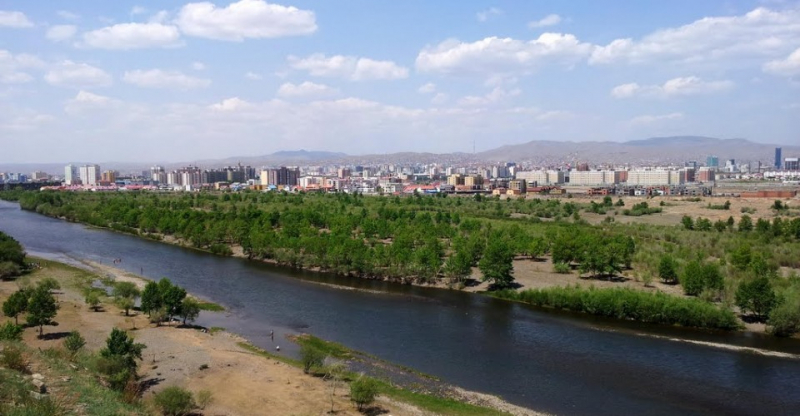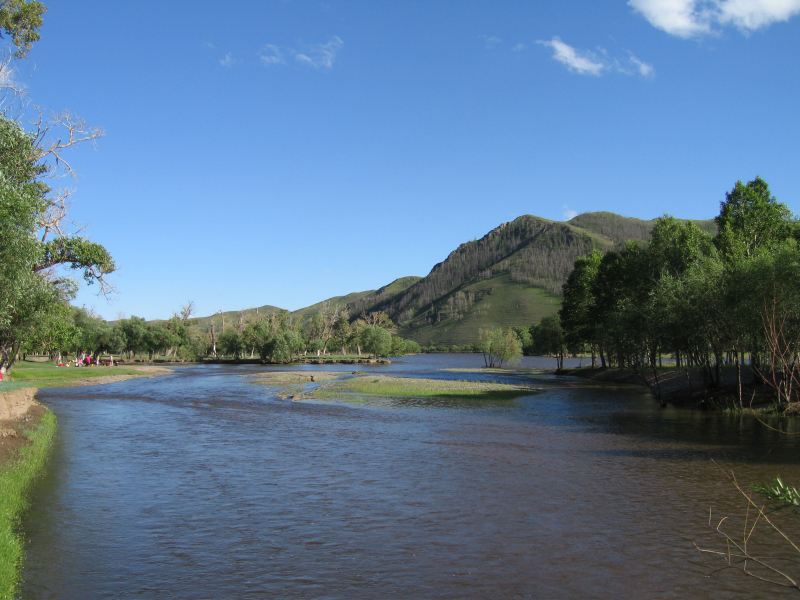Tuul

The Tuul River is one of the Longest Rivers in Mongolia and runs 437 kilometers from its headwaters in the Khan Khentii Strictly Protected Area to its mouth on the Orkhon River. The river is revered by the Mongols, who refer to it as the Khatan (Queen) Tuul. In addition, Wang Khan's palace was positioned along the riverfront. The river passes through the southern outskirts of Mongolia's capital, Ulaanbaatar, before emptying into the Orkhon River, which drains into the Selenga River. The Tuul River is one of the few rivers in Mongolia that supports the endangered sturgeon.
The river flows through the Khan Khentii Strictly Protected Area in the Khentii Mountains, in the Erdene sum of Töv aimag. It then proceeds southwest till it enters Ulaanbaatar's territory. Its water flows past the southern section of Mongolia's capital city, then in vast loops westward. When it reaches the boundary of Bulgan aimag, it turns north and follows that border. It flows into the Orkhon River at the sum center of Orkhontuul sum after entering Selenge aimag.
The Orkhon River empties into the Selenge River, which then empties into Russia and Lake Baikal. The Tuul River runs through the Khustain Nuruu National Park. From the middle of November until the middle of April, it is usually frozen over. Along the Tuul River, willow woods thrive, while the river itself is home to endangered sturgeon species. The river is now polluted, with some of it produced by Ulaanbaatar's central sewage treatment plant, as well as heavy mineral and sedimentation pollution from gold mining in the Zaamar region. Furthermore, the constant influx of people dwelling along the river may be degrading water quality.
Length: 704 km





